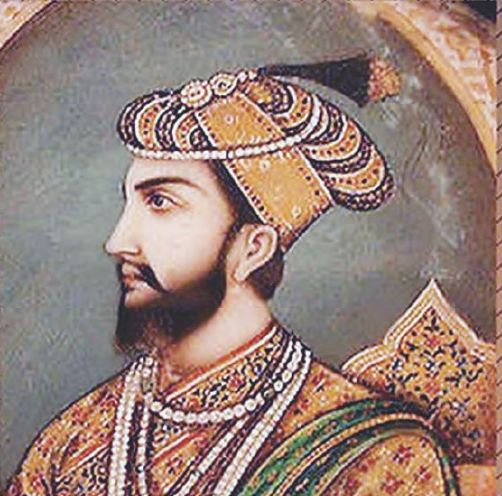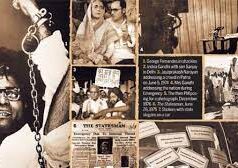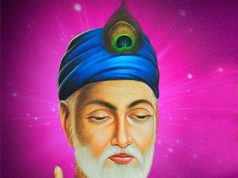
Under Sultan Naseeruddin Khusrau Hindu rites and rituals were revived in general. Idol worshipping and devastation of mosques became widespread, cow slaughter was banned and that Musalmans were ordered to paste the walls of their houses with cow dung
Under Allauddin Khilji, Islamic power reached its peak in 1312. His army led by Malik Kafur, a slave forcibly converted and castrated a large number of people, had cut into deep south, fetching enormous riches. Plunder from Madurai alone amounted to 2,750 pounds of gold worth 100 million tangas. Added to this were chests of jewels and 20,000 horses. Mongols had been held back in the north. It seemed as if the whole of India was within the grasp of Islam and the Sultanate. But when Allauddin died in 1316, his legacy was shaken by a backlash that lasted for over four months, and his lineage was extinguished.
On April 20, 1320, Allauddin Khilji’s son, Qutbuddin Mubarak was murdered by his slave holding the title of Khusrau Khan. Khusrau mounted the throne with the name of Naseeruddin (Protector of Faith).
A near contemporary, Ziauddin Barani reports that within “four or five days preparations were made for idol worship in the palace,” and that “idols were set up in the pulpits of mosques”. Possibly these were the only mosques that had been built on temples.
Badauni and Nizamuddin Ahmad say that under Khusrau Khan, “idolatry and devastation of mosques became widespread.” Barani’s account is more reliable and there is “no reason to doubt the accuracy of the facts that he has given”, since he was close to the events, had a courtier’s knowledge and was ‘not blindly communal’.
Revival of Hindu Rites
Hindu rites and rituals were revived in general. Ibn Battuta who came to India thirteen years after the event said that cow slaughter was banned and that Musalmans were ordered to paste the walls of their houses with cow dung. Barani bemoans that “in those dreadful days the infidel rites of the Hindus were highly exalted”. Nizamuddin Ahmed recalls that “the manners and customs of the Hindus acquired currency and renown”, while Badauni concurs and adds that the “rites and ceremonies of Islam tended towards neglect”.
There also seems to have been a deliberate attempt to reciprocate Islamic treatment of the Hindus and their religion. Barani says that no sooner than Khusrau took power he ordered, “all the personal attendants of the late Sultān, many of whom were of high rank, to be slain. Some were dispatched in their houses, others were brought to the palace and were beheaded in private. Their wives, women, children, and handmaids were all given to the Parwārís and Hindus.” The women of the Khilji harem were shared out among the Parvāris, while Khusrau took to himself the principal wife of Mubarak Khilji, Debal Devi.
According to Barani, “copies of the Holy Book were used as seats” while others add that they were torn and used as seats for idols installed in the mosques. Such incidents were so repulsive that historians like Ferishta have preferred to “to draw a veil over circumstances too horrid and indecent to relate.”
Did It Really Happen?
Some historians think that the reports of extensive destruction of mosques and desecration of the Holy book were only “interested propaganda designed to cloak the ambition of Ghazi Malik and his son, Jauna Khan. The Shaikh-ul-Islam (Nizam-ud-din Auliya) at Delhi should have been a better judge of the king’s religious conduct than the military governor in a far-off province”.
Common people of those times however do not seem to have entertained any doubts. The subcontinent resounded with rumour. Barani says “through all the territory of Islām the Hindus rejoiced greatly, boasting that Dehlí had once more come under Hindu rule, and that the Musulmāns had been driven away and dispersed.”
The Muslim street counter-mobilised. The “people of Multan” rebelled against Malik Maghlati, their governor, when he refused to oppose Naseeruddin Khusrau and he was killed by his own men. Muhammad Shah, the Amir of Sivistan, was freed from prison by “the people” to work against Khusrau. Malik Hoshang of Ajmer showed signs of genuine support but weakened due to lack of ground support among muslims—“his feet of determination was lax” . Even many of Naseeruddin Khusrau’s own soldiers “having no thought of drawing a sword against Malik Ghāzí and the army of Islām” took Khusrau’s money, cursed him and went home (Barani).
Thus, both the contemporary events as well as records indicate that the general impression was that the grip of Islam on Delhi had been shaken.
Who were the Barvāris ?
The key role played by the Barvāris (Parwaris, Baraos) in the chain of events is undeniable. Barani laments that “in those dreadful days … the dignity and the importance of the Parwārís were increased”. Centuries later, Nizamuddin Ahmed says that as “most of the Baraos were Hindus, the Musalman religion was overthrown”. Barani on the other hand seems to distinguish between Barvāris and Hindus, saying that it “was Khusrú’s design to increase the power and importance of the Parwārís and Hindus”. This raises the question of who the Barvāris actually were. Barani says that Barvāri were Gujaratis.
Barvāris (Baraos) were described by Amir Khusrau as militant groups often employed by rajas. The near contemporary Barani is said to have used the phrase ‘Baravān-i-Fidayin’ as a metaphor for brave suicide attacks during the Targhi rebellion. Ferishta seems to associate the Barvars with ‘pahalwāns’. Nizamuddin Ahmad says that Barvāris were a menial caste, numerous in Gujarat, and the
translator explains that they were chiefly employed as watchmen, gatekeepers, porters—functions involving strength and force.
From the above, one may hazard a guess that Barvāris were a tribe that found its way into Hindu society through the tribe-jati continuum through military and security functions. They were incompletely sanskritised and may have been inimical to the Khokars, whose Gulchander and Sahaj Rai joined Ghiazuddin’s ‘army of Islam’ against the Barvāris and Naseeruddin.
The Story of Khusrau
While the full story of Naseeruddin Khusrau will probably never be known, reports help to gather a plausible outline from glimpses fleetingly recorded in history.
Ferishta says that Naseeruddin Khusrau was the son of a rag-picker while Barani says that he was low-born. This would make Khusrau kin to outcastes. According to Barani, Khusrau only ‘pretended’ that he was related to the Barvāris. But some says that Hishamuddin, his uterine brother had “kindred and connections among the Parwarís” and was therefore not guilty of ‘pretence’. Thus it seems plausible that Hishamuddin was Barvāri through both parents, while Khusrau was Barvāri only through his mother and was an outcaste due to his natural father being a ragpicker.
The two boys fell into Khilji hands in 1305 Malwa raids, possibly along with the hapless mother. They received the names of Hasan and Hishamuddin by which they are known to history. The mother may not have received kind treatment at the hands of the lecherous Sultan and his troops, which explains the vengeful sharing of the entire Khilji harem among the Barwāris after Naseeruddin seized power.
Allauddin Khilji gave Hasan over to Shadi Malik for upbringing. He may have received a touch of kindness here as well as Sufi nurture, since he sought out the garden of Shadi Malik in his dying moments. The role played by Yusuf sufi or Sufi Khan and Malik Talbagi Nagori in his defence, points to a possible sufi connection through the names. There is also the unusual acceptance of five lakh tankas from Naseeruddin by Nizamuddin Auliya who “invariably rejected the donations of the legitimate … Tughluq”.
When the eyes of the newly freed Qutbuddin Mubarak Khilji fell upon Hasan, Ferishta says that he developed an “unnatural affection for him”. Sultan Mubarak Khilji was “also passionately homosexual. He fell deeply in love with two Islamicised Baradus brothers, Hasan and Husamu’d-Din.” Perhaps Hasan bowed to the royal will since he got the title of Khusrau Khan shortly. Hishamuddin may have been recalcitrant, since Barani calls him “an ill-conditioned Parwarí slave, whom the Sultān had often thrashed”.
Possibly neither of the two brothers was as well-conditioned as Ziauddin Barani to accept the Turkish vice, although Khusrau was better at dissimulation. Both plotted rebellion at the first opportunity they got. The moment Hishamuddin was sent to Gujarat as governor, he gathered his Barvāri kinsmen and plotted rebellion. Found out, sent back to Delhi, he was pardoned with a slap, on the strength of the affections cultivated by Hasan Khusrau Khan.
Khusrau as a Rebel
Khusrau himself “had often thought of cutting down the Sultān with his sword when they were alone together.” When put in charge of the southern campaign, he too plotted rebellion with “some of his fellow Hindus, and with several disaffected adherents of Malik Nāíb Kāfúr” (Barani). Found out by loyalists to the vice that ruled Delhi, returned in unusual circumstances, he regained the favour of the Sultan. The blindness that Mubarak Khilji had inflicted upon his brothers Shadi Khan and Khizr Khan—both murids of Nizamuddin Auliya, seems to have enveloped the Sultan’s mind. Convinced of the loyalty of Khusrau Khan, he punished his accusers and elevated Khusrau further in his favours.
Barani describes Khusrau Khan as a ‘base, designing, treacherous, low-born fellow’ quite justifiably from the orthodox Islamic perspective. Forced by Islam into slavery, compelled into conversion, into catamite survival, Khusrau could only use base methods and treachery to blow his tormentors away.
Khusrau Khan showed surprising stubbornness in pursuing his designs. He partook in temple destructions and humiliation of Hindu kings by the Islamic invaders. Strengthening his standing among the Islamic hordes in this way, he took away all the wealth of an extremely rich Sunni who had fattened with Hindu patronage and had hoped that his ill-gotten gains were safe in Islamic invasion. Khusrau Khan’s plots returned him to Delhi.
Back at Delhi, he traded his favours to obtain permission from the lust-crased Sultan to collect a force of 40,000 Barvāris within the army, with about 10,000 of them in the capital. He was made commander-in-chief (Barani) and vizier (Ferishta). There was an opportunity of cutting down the Sultān on his hunting excursion to Sarsāwa. But since the Barvāris were a minority, they would be destroyed immediately. Hence the plan was hatched to assassinate the Sultan in the palace, convert it into a stronghold, call maliks and amírs together and make them accomplices, or kill them on their refusal, according to Barani.
The palace revolution of April 20, 1320 that followed, unleashed tremors that shook the Delhi Sultanate at the seat of its power.
Was Naseeruddin Khusrau a Hindu?
Prof. Ram Sharma has argued that Naseeruddin Khusrau reverted to Hinduism after he seized power, but without any direct evidence. It seems more likely that he chose the title ‘protector of the faith’ (Naseeruddin) to indicate his sufi convictions. Nizamuddin Auliya seems to have been sufficiently convinced of his affiliations to accept his donation of five lakh tankas.
Sufi saints have both Hindus and Muslims as followers. Naseeruddin Khusrau’s agenda indicates that he may have inclined towards sufism more as a Hindu than as a Muslim. The events in Delhi that followed his accession to the throne announced to the subcontinent that the power of Islam in India was not inviolable. When faced with the army of jihad and certitude of defeat, he proceeded to torpedo a crucial foundation of Islamic imperialism—the royal treasury. Determined to empty the royal treasury, Barani says that Naseeruddin “brought out all the royal treasures from Kílúgharí and Dehlí, making a clean sweep of the whole…. The records and accounts he caused to be burned, and everything in the public treasury he distributed as pay or gifts to his forces. Furious at the thought of anything valuable falling into the hands of the chief of Islām, he did not leave a dāng or diram behind.”
Abhi Dilli Door Ast
The burning of records and accounts is extremely significant. Even in the jaws of prospective defeat, Naseeruddin Khusrau was thinking of protecting the recipients of his largesse. The names of many of the participants in his gamble remain unknown to history as a result it is not known if some or many went into the Khurasan. One recipient of his endowments was Nizamuddin Auliya, who resolutely refused to return the money that he had received from Naseeruddin to the Tughlaks, even while he refused gifts from the latter.
It is said that while going away to the north west on an armed expedition, Ghiazuddin Tughlak issued orders for Nizamuddin to leave before he returned to Delhi. That was when the saint is said to have muttered …Abhi Dilli door ast… (Delhi is as yet far away). Ghiazuddin Tughlak never returned to the capital and died in the collapse of a pavilion roof (Suvarova). Nizamuddin Auliya never left Delhi.
There is something called karma.
(The writer is President, Samvit Kendra)
Courtesy: Organiser














